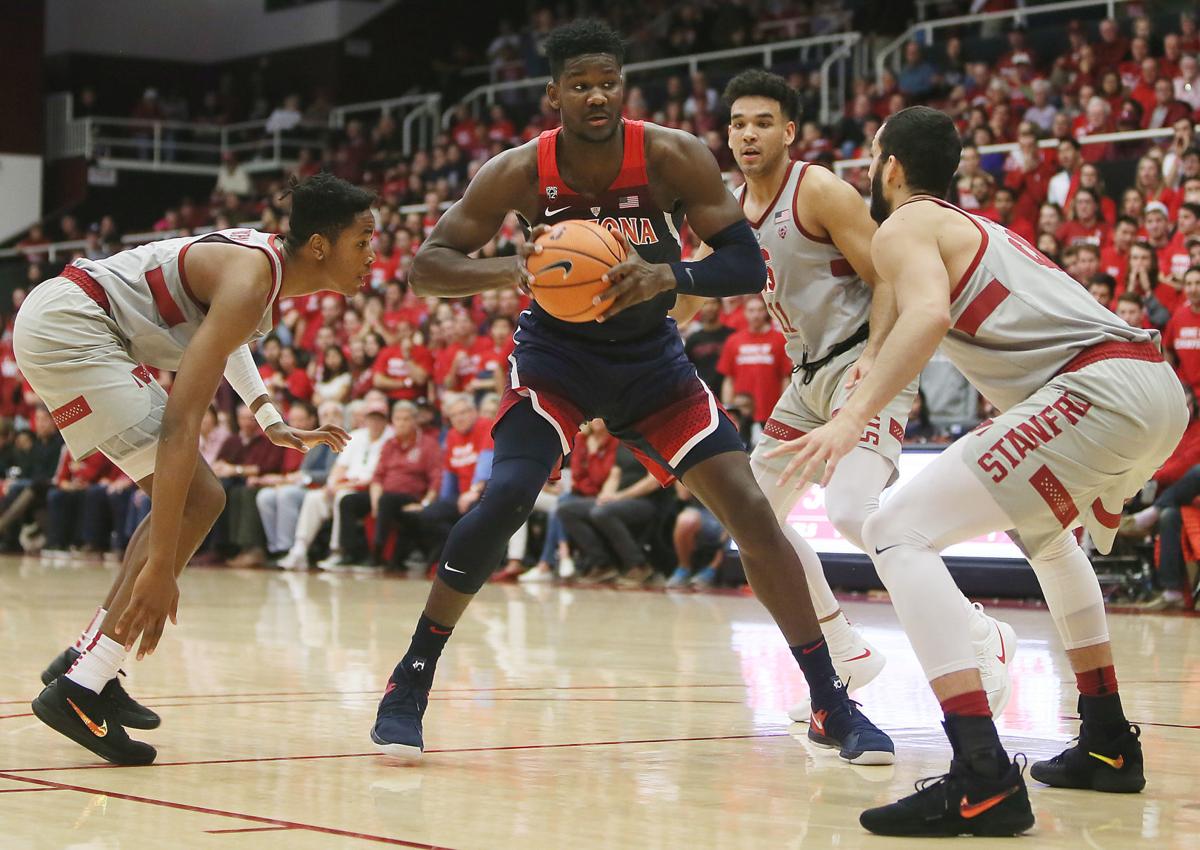STANFORD, Calif. — Earlier this month, Arizona coach Sean Miller estimated that 80 percent of Pac-12 teams are playing at least some zone defense.
In games involving the Wildcats, that number might now approach 100 percent.
Mostly a man-to-man team, Stanford threw out some zone on Saturday against the Wildcats with some pretty effective results. While the UA still pulled out a 73-71 win, the Cardinal managed to slow its No. 1 target: Deandre Ayton, who was well below his averages with only nine points and eight rebounds.
“Their zone kept us out of the paint,” UA forward Rawle Alkins said.
No doubt Colorado and Utah coaches will take notes off that video in advance of their visits to McKale Center this week.
Already, the Buffs pulled out some zone from what is normally a committed man-to-man defense and flummoxed the Wildcats enough to pull off an 80-77 win over Arizona on Jan. 6 in Boulder. Utah, too, crossed them up a bit in the Wildcats’ 94-82 win in Salt Lake City.
“It’s a homestand that has great meaning,” Miller said of the week ahead. “We lost to Colorado, and Utah was a similar game as (Stanford). It could have gone either way.
“We’re playing against two really good teams.”
Both UA opponents this week could be particularly encouraged by the final eight minutes of the first half that Stanford and Arizona played.
In that span, Arizona shot 1 for 12 and turned the ball over twice. Half of UA’s 12 field goals were taken from behind the 3-point line, with the Wildcats often throwing up bombs when they were able to do little else.
“If you’re Stanford, you have to feel pretty good about that,” Miller said.
But in the second half, the UA matched Stanford’s 42 points, moving the ball better and working the ball inside more often no matter what the Cardinal was doing. The fact that the Wildcats also scored them without nearly as much Ayton as usual says something, too.
In the second half, Ayton took just three shots in 15 minutes, made one of them, had four rebounds, a block and an assist, but also turned the ball over twice — and fouled out for only the second time all season.
Miller picked up a technical foul when he argued vehemently at official Tony Padilla following Ayton’s fourth foul and, while that didn’t prevent Ayton from fouling out in the final minute, it may have further sparked the Wildcats offensively.
“In the second half, we weren’t perfect but the execution, the shots, was much better,” Miller said. “I think the fact that we scored the (42) points did back that up.”
Not surprisingly, Allonzo Trier had 13 of those 42 points, heating up in typical fashion during the second half, hitting 2 of 4 3-pointers and making 7 of 8 free throws.
The Wildcats also found plenty of help from center Dusan Ristic, who had 12 points on efficient 6-for-9 shooting, taking efficient advantage of holes in Stanford’s defense to hit a variety of shots within 14 feet of the basket.
“They focused their defense more on Deandre and I found a chance,” Ristic said. “My teammates found me open and that’s how I scored the majority of my points.”
Ristic wound up with 18 points and nine rebounds over 32 minutes, just two points shy of his career-high 20 he’s scored twice before.
“People don’t talk a lot about Dusan because of Deandre. But Dusan as a senior is a heck of a player,” Miller said. “How he played out there is a big reason we won. And when Deandre was out, Dusan had two big made field goals against the zone.
“We got the ball inside and we can’t get away from that. That’s kind of who we are.
“Everybody benefits when we get it in there. The end of the first half we really got away from that.”





